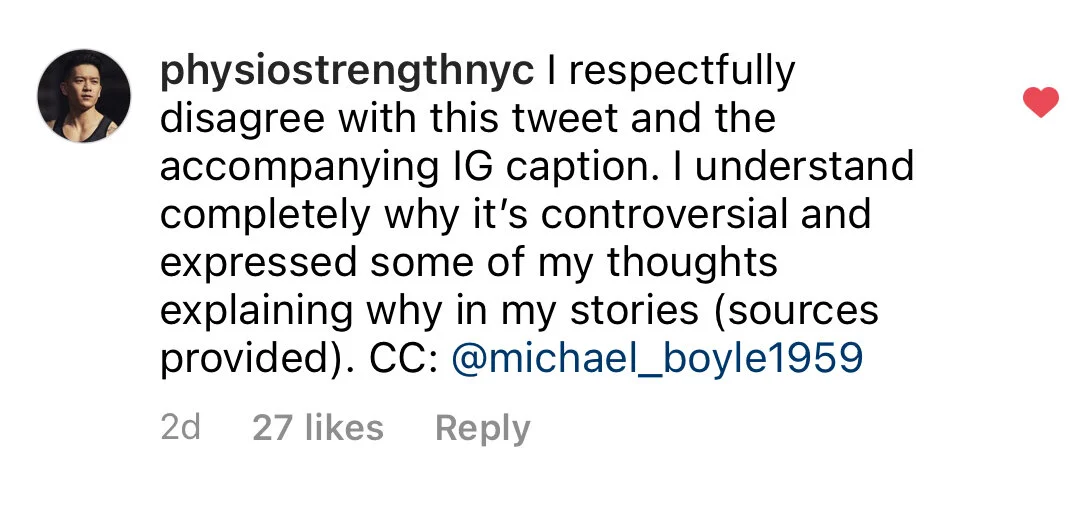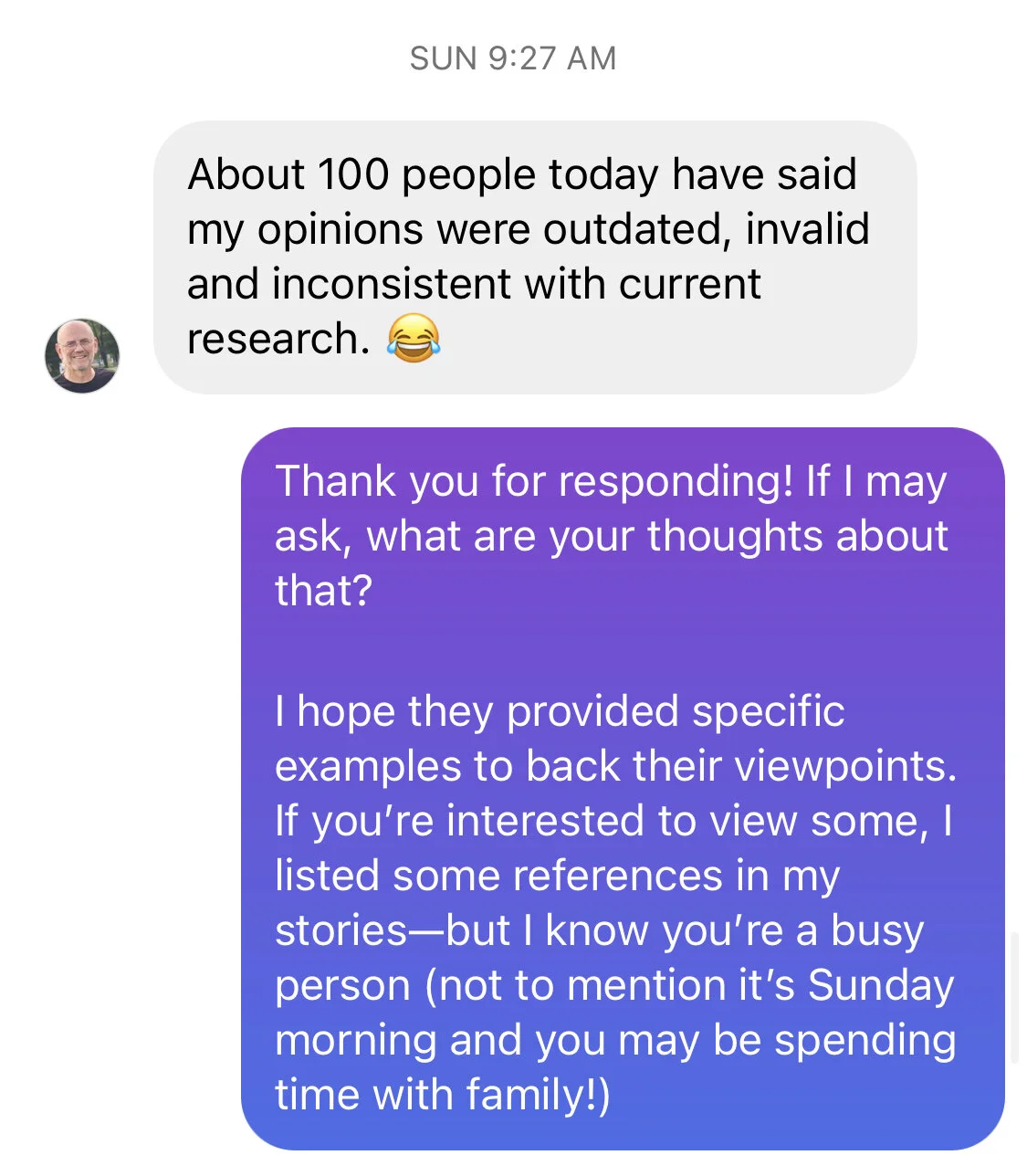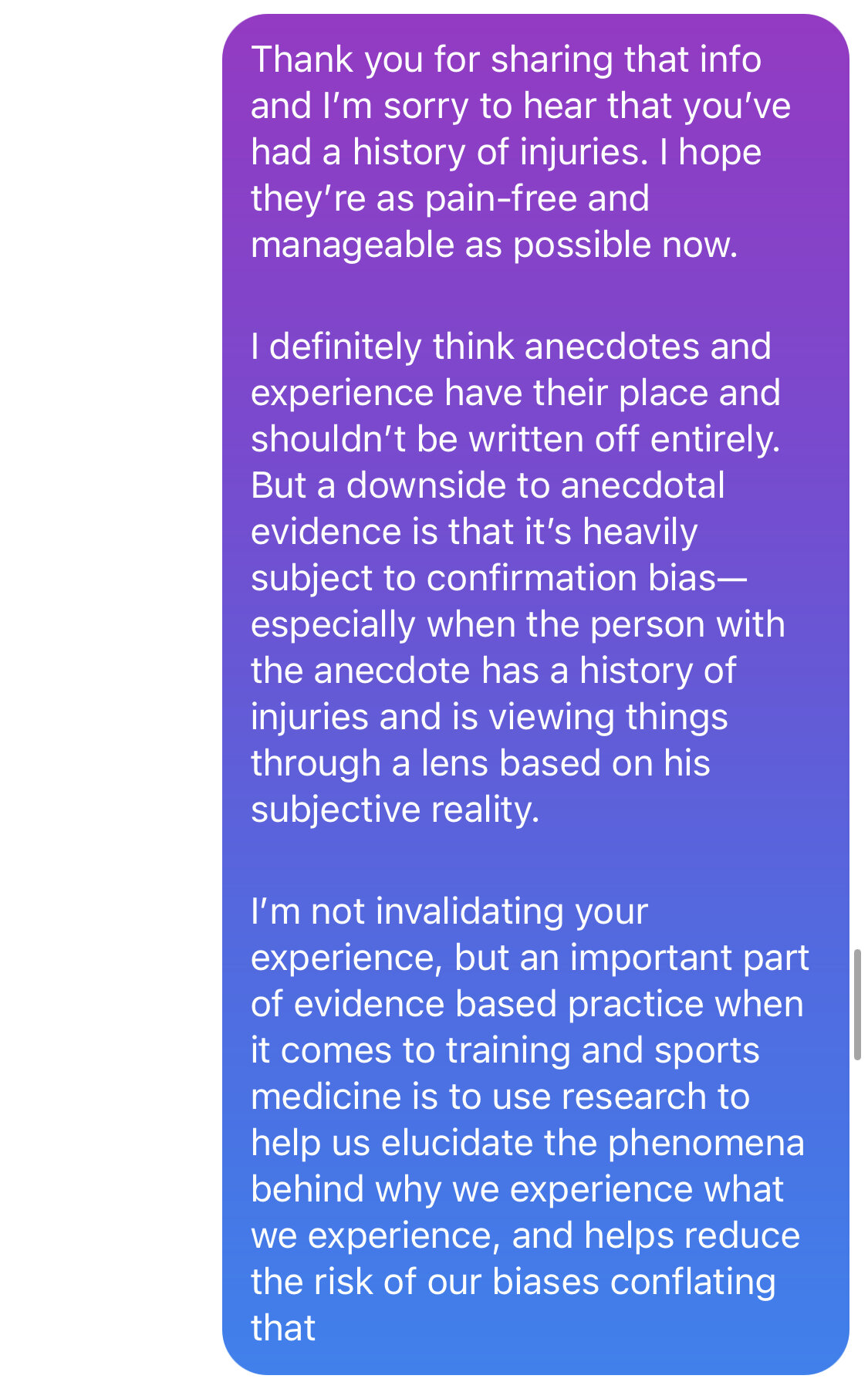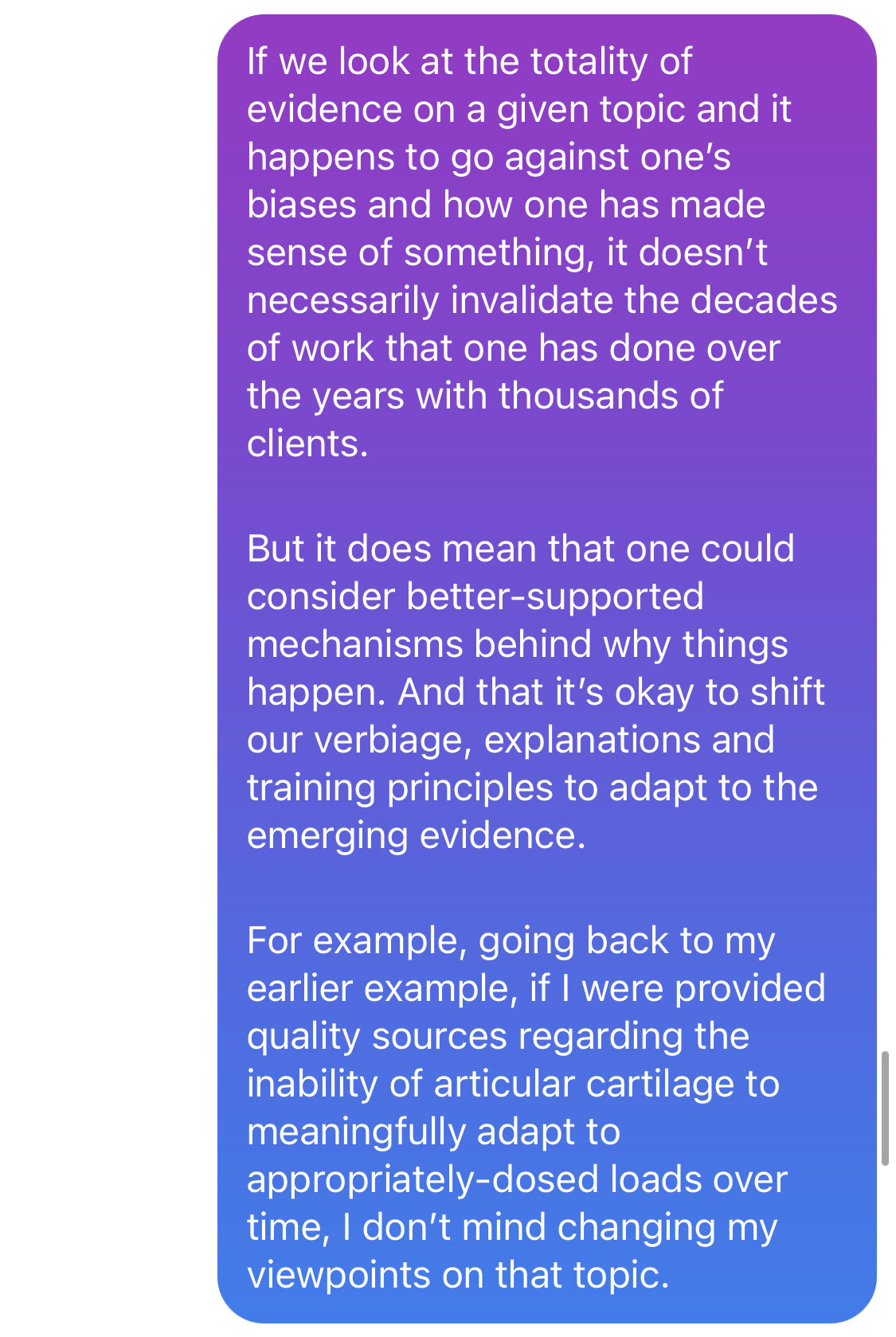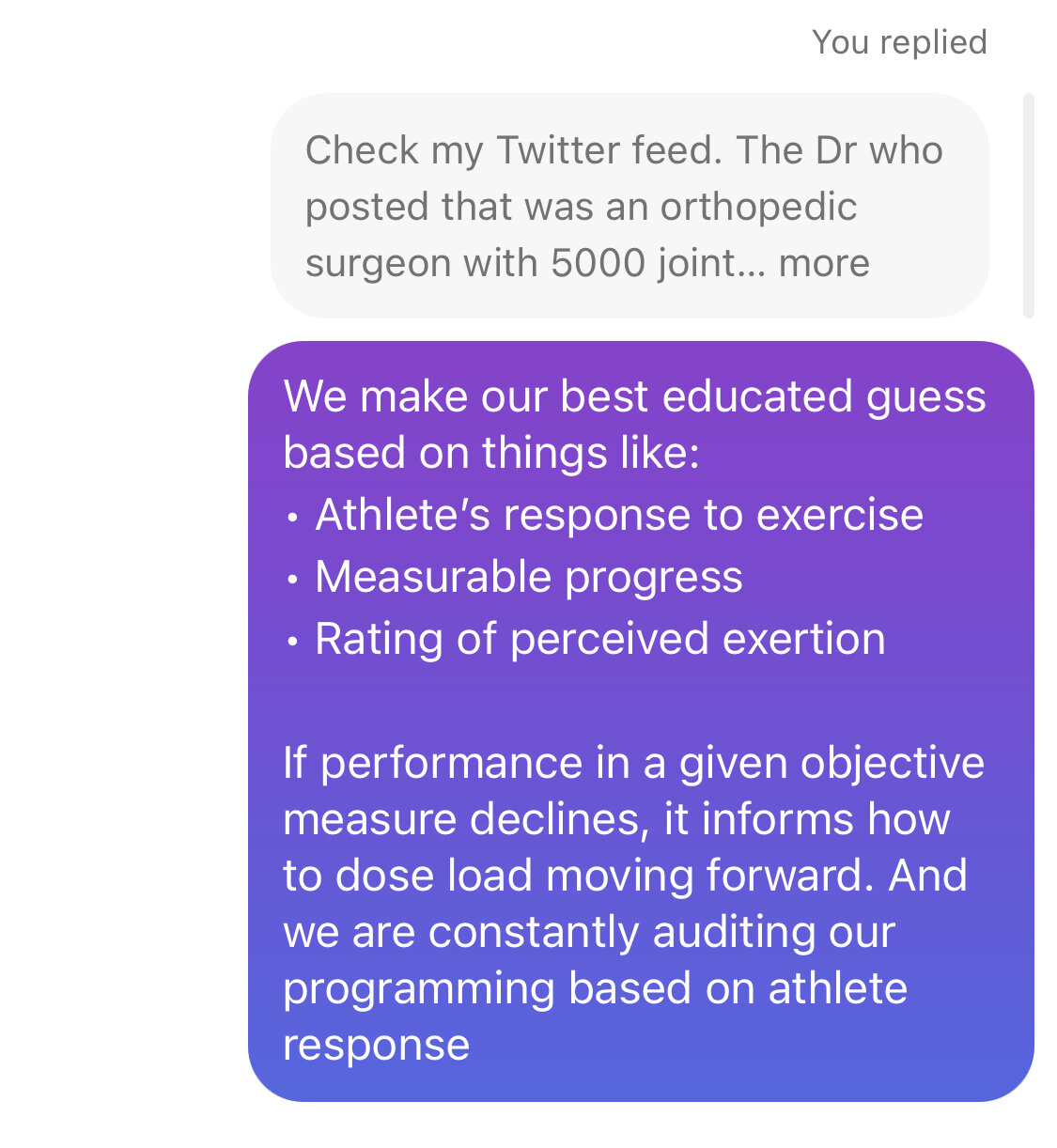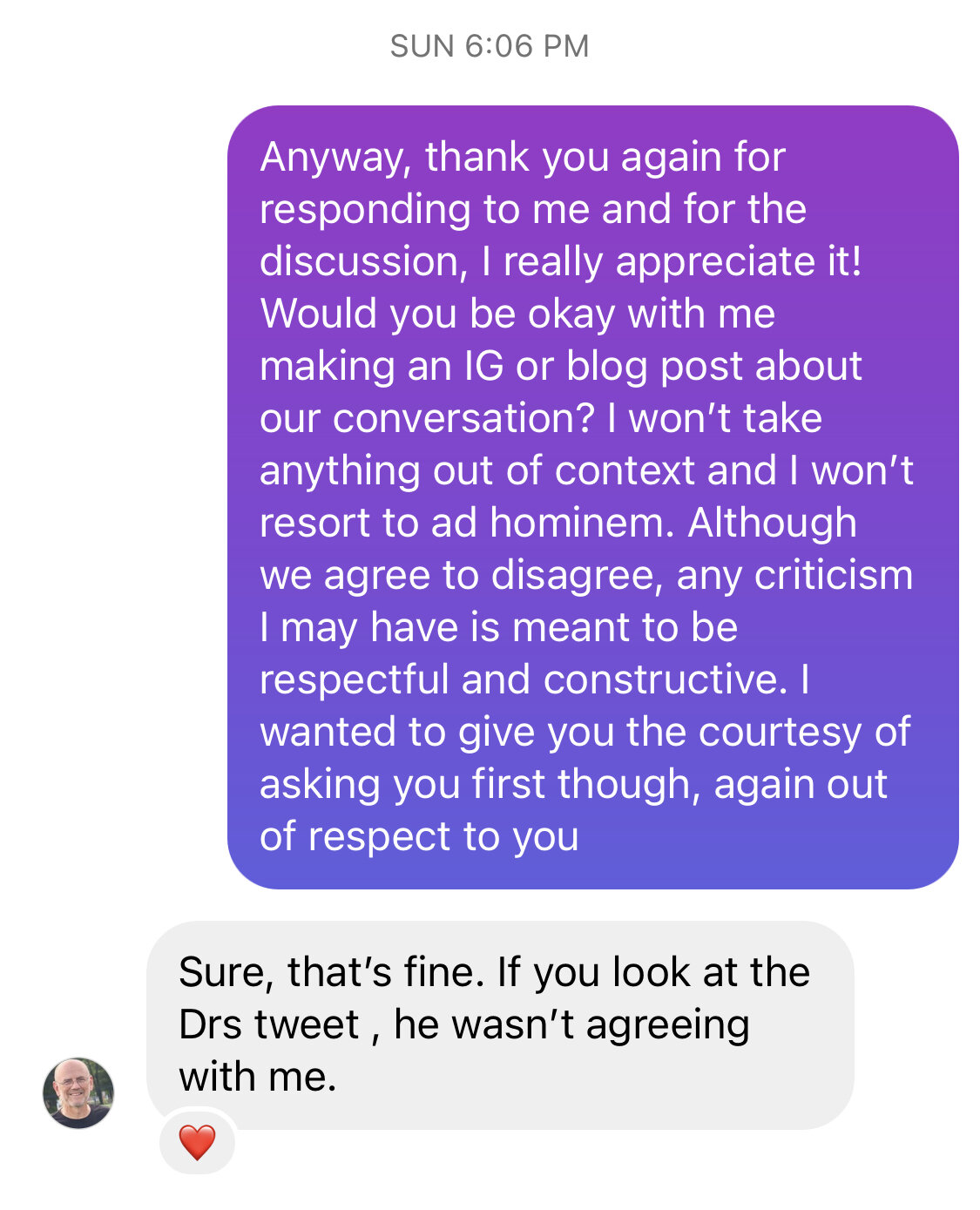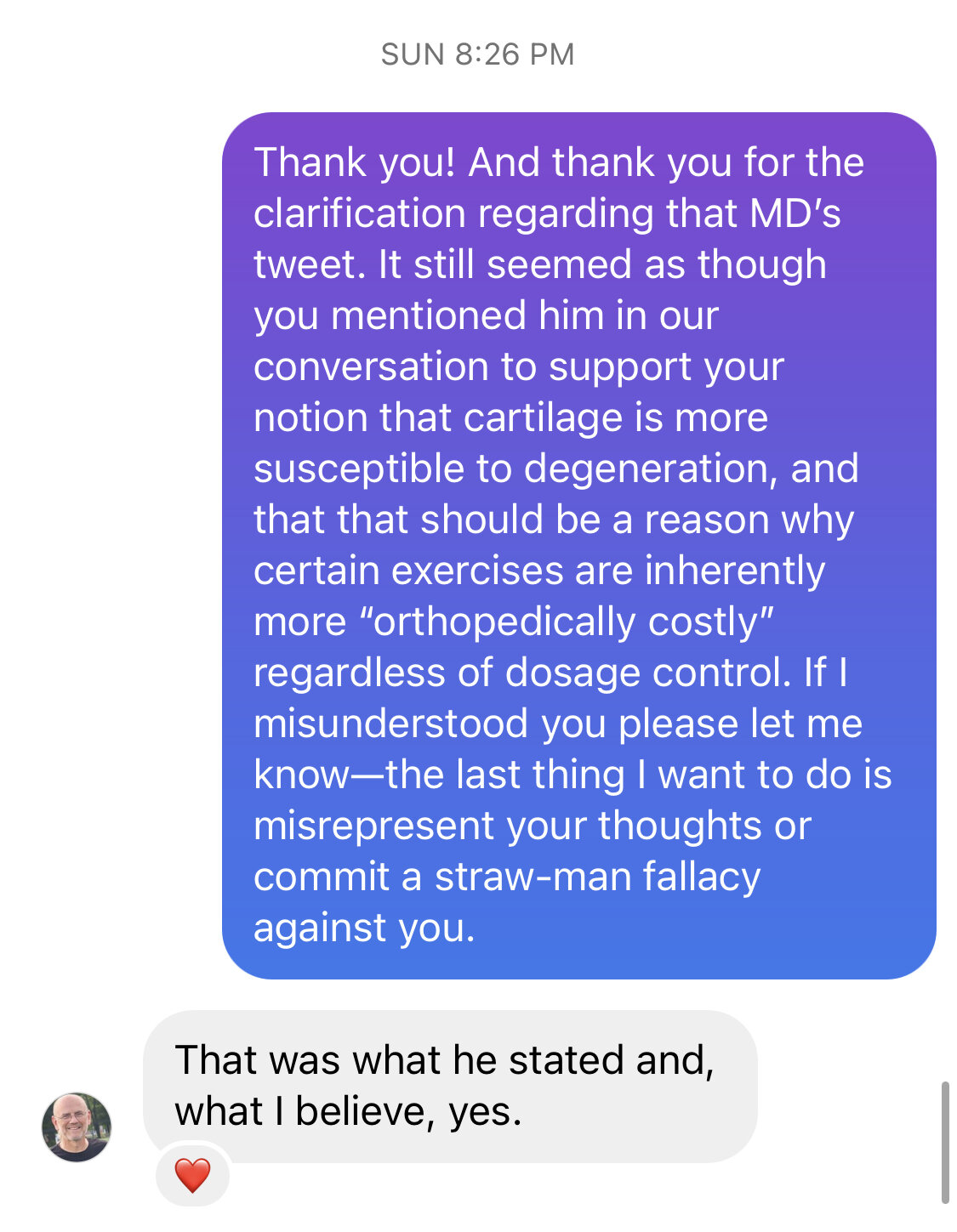A Conversation with Strength Coach Michael Boyle
This past weekend a colleague brought to my attention the following Instagram post of Coach Michael Boyle:
After reading the above post in its entirety along with several responses to comments that Coach Boyle had made, I had commented the following:
And yes, I like my own comments lol
The following images are screenshots of my Instagram Stories I mentioned in my comment above explaining my disagreement with Boyle’s original post (OP). You can also view these more easily in the “Conversations” highlight on my Instagram profile.



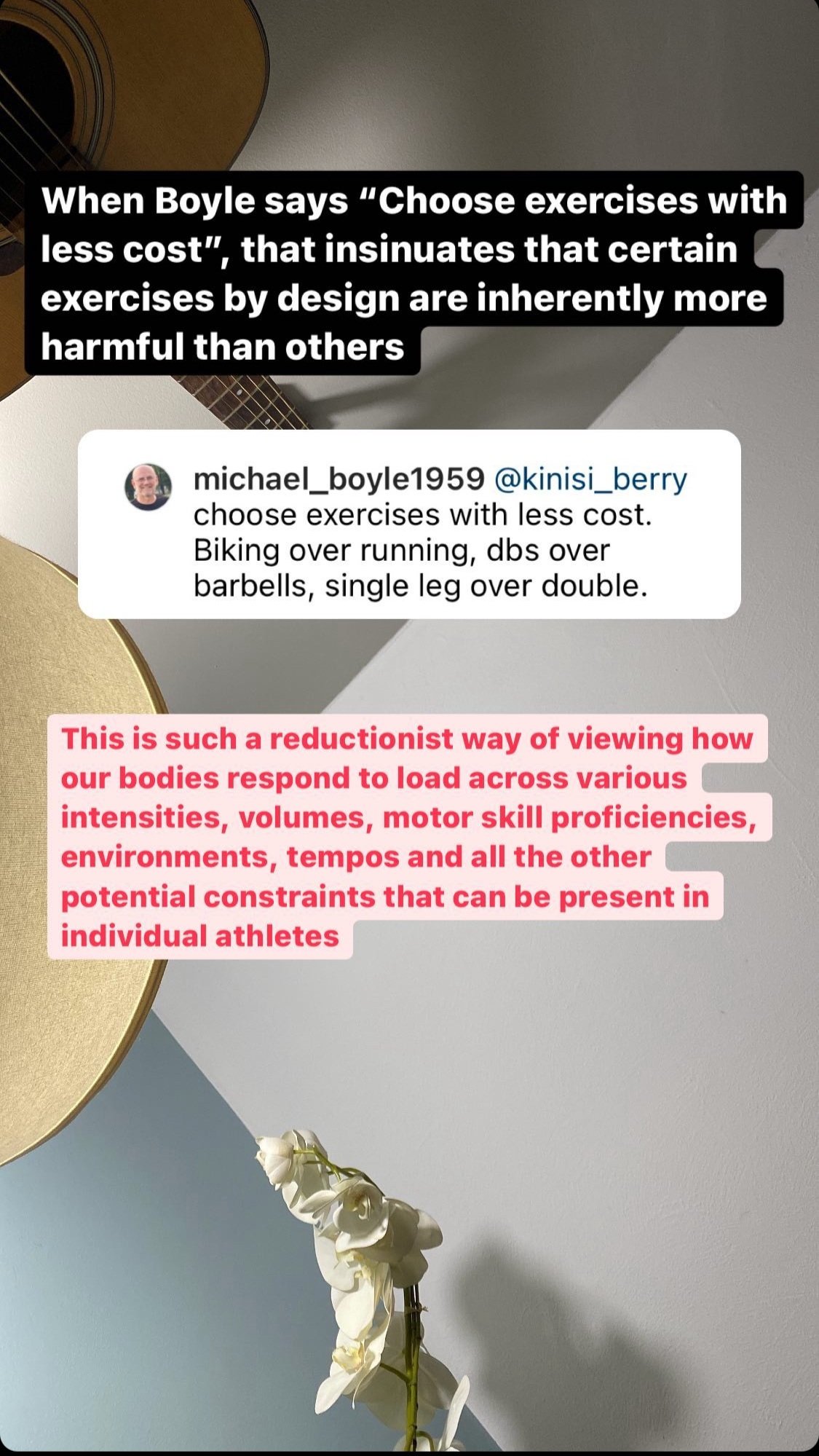



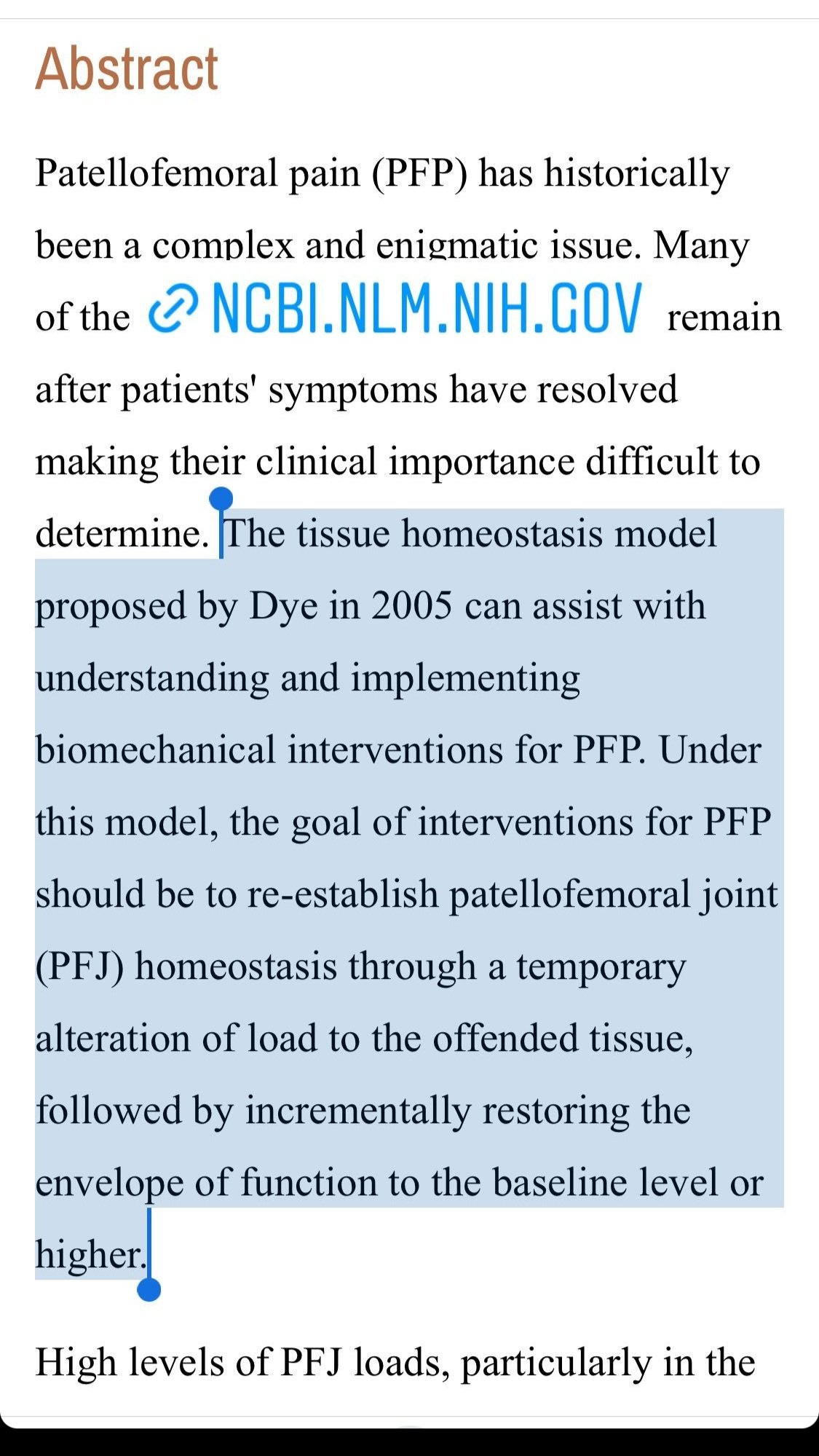


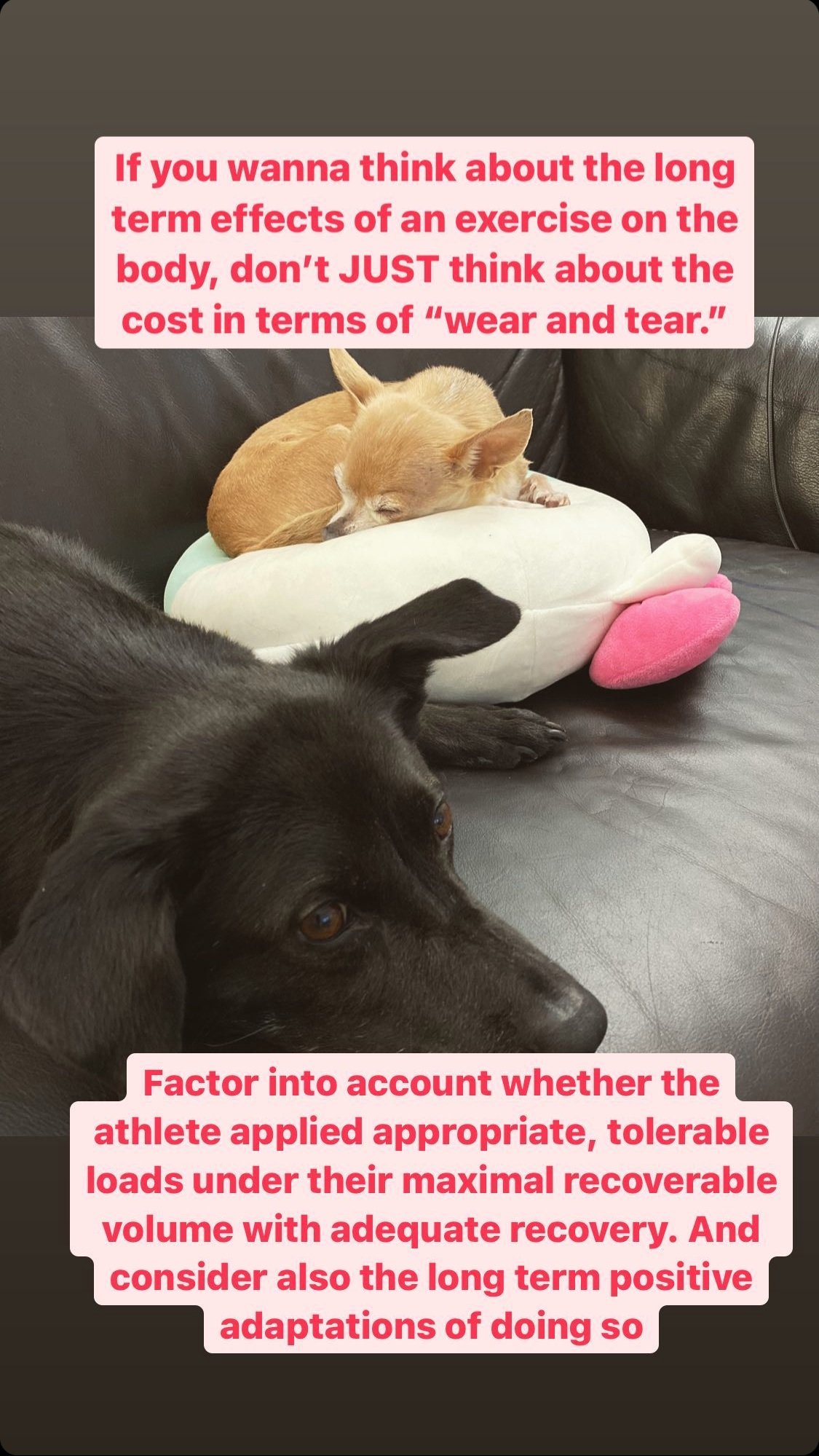

I tagged Coach Boyle in the final screenshot, which he ended up responding to (and which I am grateful for). The following images below are screenshots of our conversation in its entirety and which I was granted permission by Coach Boyle to post:
Some final thoughts
First of all, I think engaging in discussion via back and forth comments under an IG post is a really inorganic way to communicate with someone. It’s easy for comments to get lost, they’re hard to find, other people interject and comments tend to be spaced very far apart in time. It’s hard enough to gauge tone sometimes via text and these conditions don’t really make it any easier. It’s easy for well-meaning individuals to let a conversation go haywire and at the end of the day it’s difficult for constructive communication and understanding to occur. While direct messaging doesn’t completely sidestep all these issues, it’s an easier space to genuinely engage in honest discussion with someone—which is what I wanted to do.
I have much professional respect for an individual like Coach Boyle who has a prolific career and has done much to educate people for decades on principles of strength & conditioning, myself included. Many people whose content I learned from (Eric Cressey, Charlie Weingroff, Ben Bruno, Tony Gentilcore to name a few) have either been mentored by or have worked closely with Mr. Boyle to some degree. I want to make it clear that although I disagree on certain aspects of his methodologies, I also acknowledge that he has done a lot of positive work for the sports performance community, including athletes, coaches and educators. My criticisms have more to do with certain ideas of his, and not necessarily of him as a human being.
One of my MOs as a physical therapist is to help dispel misleading information that I believe could potentially have nocebic consequences, especially when that information is coming from a large, influential platform. I was grateful that Coach Boyle was willing to hear my thoughts because I was hoping I could provide some evidence-based information and insight specific to my scope of practice as a physical therapist about why I disagreed, and to see if this would help reconcile some of the opposing beliefs touted in his OP.
A large portion of our conversation dealt with anecdotal evidence versus objective evidence, and how to reconcile thinking when those two are opposed to each other. As I had mentioned, the latter doesn’t necessarily invalidate the experience of the anecdoter (I know that’s not a word), but it can provide insight on how the anecdoter may better make sense of his/her observations in the perpetual quest to be “less wrong.” There’s nothing wrong with pivoting one’s position when faced with new information and having it re-shape the way one does things and thinks about them.
Being rigidly attached to a belief that is incongruous with emerging evidence, especially in this context, can potentially be inadvertently fear-mongering. If I can briefly talk about my anecdotal experience with patients I’ve seen over the past decade, nocebic beliefs about the presumed dangers of “wear and tear” on joints from exercises that are just considered inherently dangerous result in the following:
Exacerbating chronic low back pain due to unnecessary avoidance of spinal flexion,
Fear of maintaining anything other than a “neutral spine” during lifting,
Avoidance of running for fear of inevitable knee osteoarthritis,
Rigid adherence to highly specific and convoluted motor pattern sequences of “firing certain muscles” for the sake of core stability or avoiding dysfunctional and pathologic movements
Never letting one’s knees go past their toes under any circumstances whatsoever.
So while it may seem I’m unnecessarily harping on semantics and details, my intention through conversations like these is exactly the opposite. I’m curious about the epistemological motivations behind people’s beliefs and whether or not they’re willing to change their minds. These issues matter to me because it’s easy for certain ideas to become popular and viral regardless of veracity, which are hard to reverse and have potentially harmful consequences.
Thanks for reading this far if you’ve made it this far because perhaps it means you care about these things too and they’re important to you. I’m looking forward to having more conversations such as these with people, especially if we disagree, and to be wrong myself in the future as I know that’ll inevitably happen.
References:
Dye SF. The knee as a biologic transmission with an envelope of function: a theory. Clin Orthop Relat Res. 1996;(325):10-18. doi:10.1097/00003086-199604000-00003
Willy RW, Meira EP. CURRENT CONCEPTS IN BIOMECHANICAL INTERVENTIONS FOR PATELLOFEMORAL PAIN. Int J Sports Phys Ther. 2016;11(6):877-890.
Sanchez-Adams J, Leddy HA, McNulty AL, O'Conor CJ, Guilak F. The mechanobiology of articular cartilage: bearing the burden of osteoarthritis. Curr Rheumatol Rep. 2014;16(10):451. doi:10.1007/s11926-014-0451-6
Racunica TL, Teichtahl AJ, Wang Y, et al. Effect of physical activity on articular knee joint structures in community-based adults. Arthritis Rheum. 2007;57(7):1261-1268. doi:10.1002/art.22990

